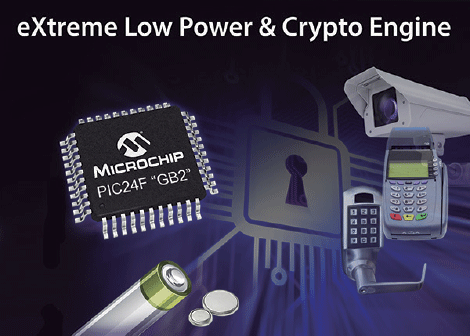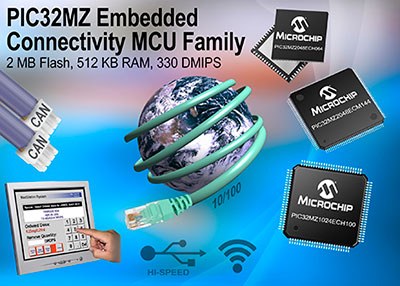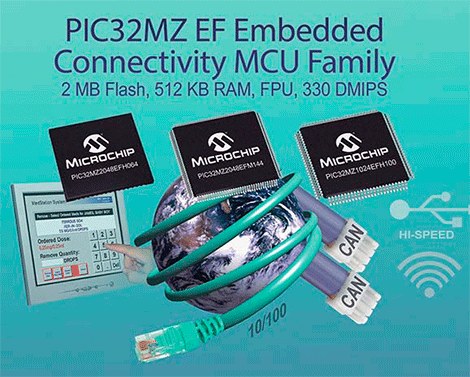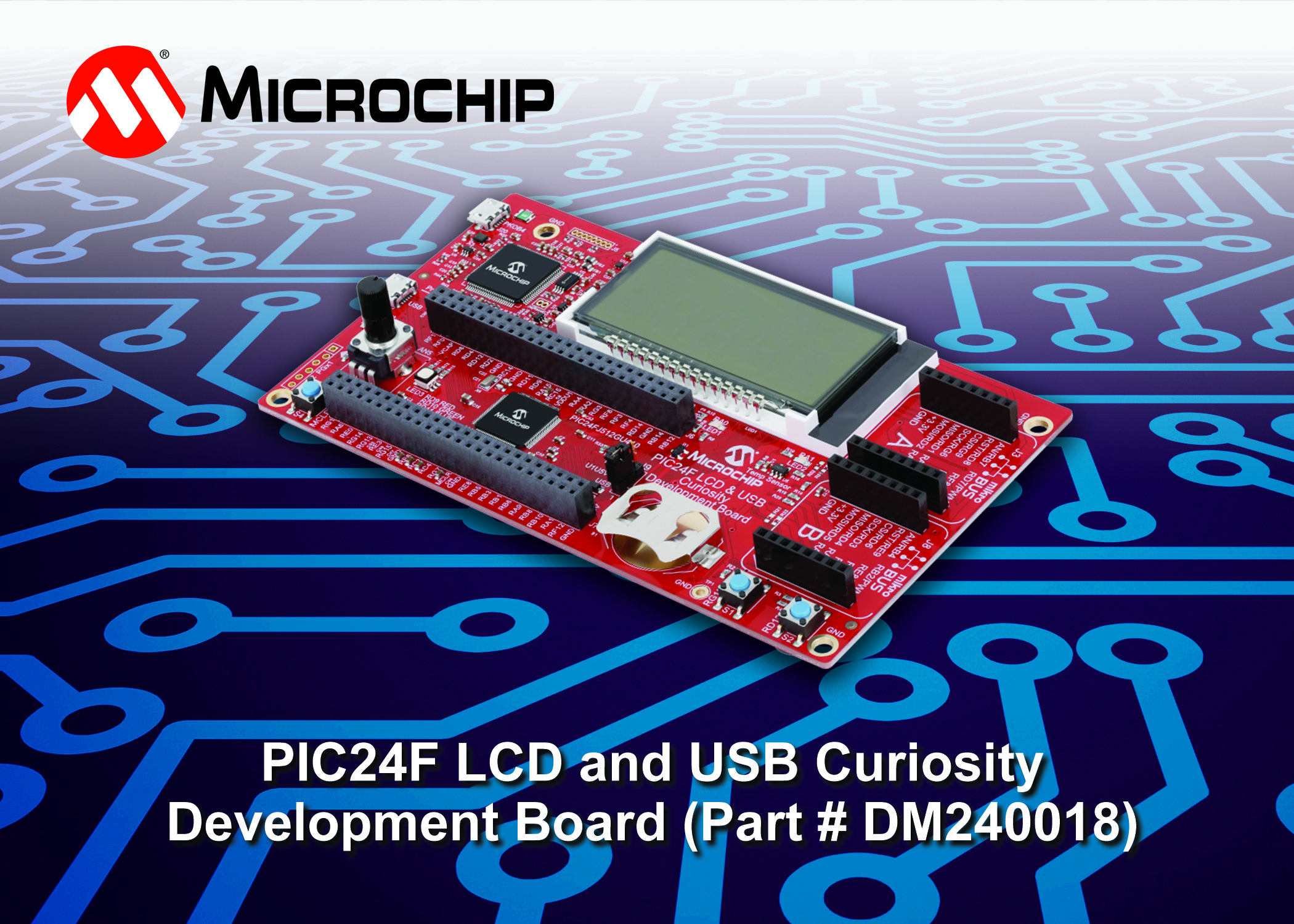Microchip announces the expansion of its eXtreme Low Power (XLP) PIC® microcontrollers with the PIC24F “GB2” family. This new family integrates a hardware cryptographic engine, random number generator, and one-time programmable key storage to protect data in embedded applications. The PIC24F “GB2” devices offer up to 128KB Flash and 8KB RAM in small 28- or 44-pin packages for battery-powered or portable applications such as Internet of Things sensor nodes, access control systems, and door locks.
The PIC24F “GB2” family integrates various security features to protect embedded data. The full hardware cryptographic engine supports AES, DES, and 3DES standards, reduces software load, lowers power consumption, and speeds up operation. This is another example of Microchip's Core Independent Peripherals, which can operate without CPU supervision. In addition, a random number generator creates random keys for encryption, decryption and authentication of data in order to provide a higher level of security.
For added protection, one-time programmable key storage prevents the encryption key from being read or overwritten. These security features increase the integrity of embedded data without sacrificing power consumption. Using XLP technology, the “GB2” family achieves operating currents of 180 µA/MHz and 18 nA sleep mode for very long battery life in portable applications.
In terms of connectivity, the "GB2" family integrates USB for device or host connections, as well as a UART with support for ISO7816 that is practical for smart card applications. With these features, the PIC24F “GB2” devices protect embedded data, consume less power and maximize battery life, all in packages as small as the 28-pin QFN for fitness and medical applications such as pedometers, accessories to carry with clothes and portable devices; computer applications such as PC peripherals, printers and portable accessories; and industrial applications such as security door locks, access control systems, security cameras, POS terminals, smart card readers, heat/gas meters and sensor nodes for the Internet of Things. Microchip also has a flexible range of wireless modules certified for Wi-Fi®, ZigBee®, Bluetooth® and Bluetooth Low Energy, making it easy to add wireless connections to a PIC24 “GB2” application.
The combination of the PIC24F “GB2” family and Microchip's embedded wireless solutions enables low-power wireless connectivity to Internet-connected objects as well as faster uptime and lower BOM costs.
The PIC24F “GB2” family is supported by Microchip's standard suite of world-class development tools, including the Explorer 16 Development Board (DM240002) priced at $129,99; the PIC24FJ128GB204 plug-in module for USB (MA240037) from
$25,00; the $24 PIC128FJ204GA240036 non-USB plug-in module (MA25,00); and the $164131 PICtail™ Plus USB Daughter Card (AC60,00). Wireless connections can also be added using one of Microchip's Wireless PICtail daughter cards, such as the $171 WiFi PICtail Development Board (RN-39,95-PICtail) and the Bluetooth LE PICtail/PICtail Plus (RN-4020-PICtail). 49,00-PICtail) for $XNUMX.
There are versions of the product with USB (PIC24FJXXXGB2XX) and without USB (PIC24FJXXXGA2XX). The PIC24FJ128GB204, PIC24FJ64GB204, PIC24FJ128GA204, and PIC24FJ64GA204 models are supplied in 44-pin TQFP and QFN packages. The PIC24FJ128GB202, PIC24FJ64GB202, PIC24FJ128GA202, and PIC24FJ64GA202 models are supplied in 28-pin SOIC, SSOP, SPDIP, and QFN packages. All of these new microcontrollers are now available for sampling and volume production.
For more information, visit Microchip's website at http://www.microchip.com/get/GNUT.







